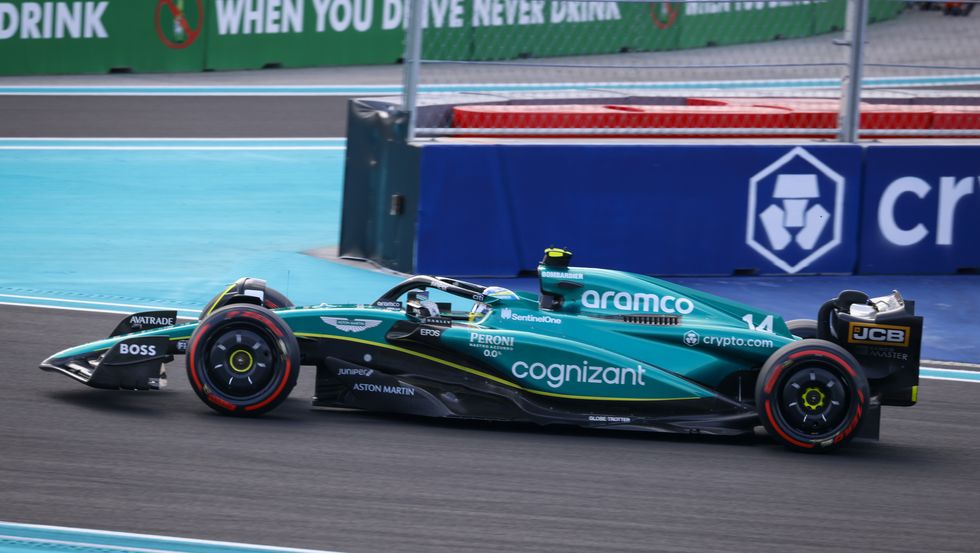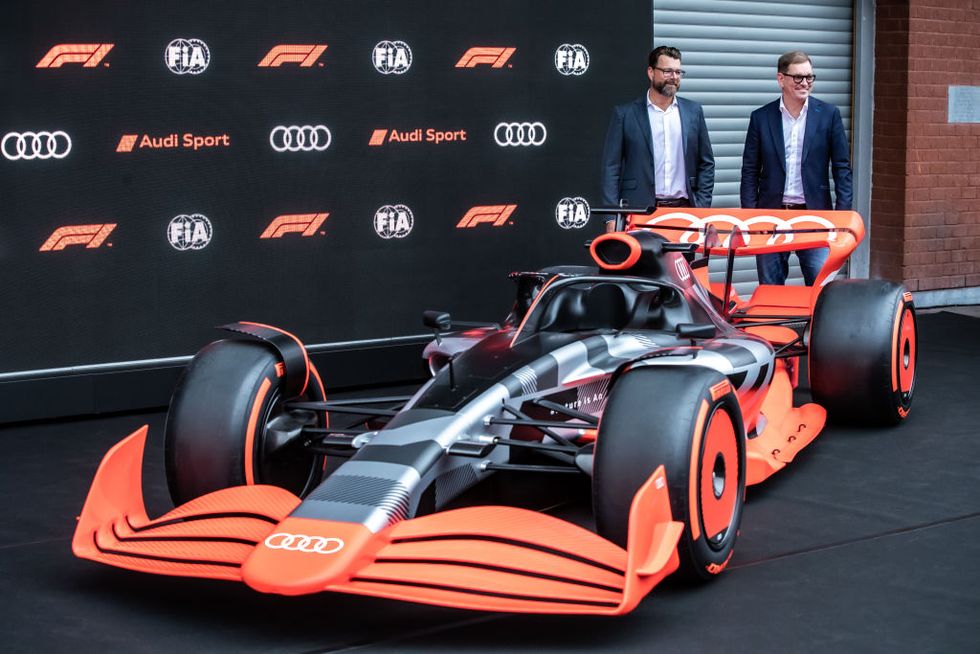- Honda officially ceased its works involvement with Red Bull after the 2021 season but remained onboard with the F1 team with a supply and technical deal through 2025.
- Honda expressed its interest in the 2026 regulations earlier this year but Red Bull opted to sign a deal to develop its own engines in-house, aided by Ford.
- Aston Martin, meanwhile, has been a customer team throughout its existence, and has been powered by Mercedes since 2009.
There will be six power unit manufacturers when Formula 1 introduces new regulations in 2026 after Honda announced that it will partner Aston Martin.
The deal between the two parties was revealed in Japan on Wednesday.
Honda has had an on-and-off history in Formula 1 but has been involved in the sport since 2015, initially with McLaren, before linking up with Red Bull’s two teams.
It officially ceased its works involvement after the 2021 season but remained onboard at Red Bull with a supply and technical deal through 2025. Red Bull won both world driver and team championships in 2022 and are on course to dominate the 2023 season.
Honda expressed its interest in the 2026 regulations earlier this year, but Red Bull opted to sign a deal to develop its own engines in-house, aided by Ford, leaving the Japanese marque without a partner.
Aston Martin, meanwhile, has been a customer team throughout its existence, and has been powered by Mercedes since 2009, when it competed as Force India. Aston Martin also uses Mercedes’ gearboxes and rear suspension.
Under owner Lawrence Stroll it has long-term ambitions to contend for the world championship. Stroll, who rebranded the team Aston Martin for 2021, has invested heavily in the team, expanding its personnel and recruiting top aerodynamicists, while its new factory is due to open imminently. It has surged up the grid in 2023, scoring podiums at four of the five Grands Prix, and is second in the championship.
A works deal—moving away from its status as a Mercedes customer—was regarded as a crucial part of its development and that has now been attained from 2026.
“Honda is a global titan and its success is long-standing and impressive,” said Stroll. “Honda and its engineers are racers and love to develop their products in competition – racing is part of their DNA, and always will be.
“It is the final piece of the jigsaw to establish Aston Martin as a top team capable of winning titles.
“Combined with the new campus, we are giving the team all the tools it needs to win.
“We need to exploit every single area of our technical package and now a bespoke power unit is the most important last step of that journey. 2026 creates a reset and Honda’s expertise are the right match for Aston Martin.”
Honda was enticed to re-commit to Formula 1 by the revised engine regulations for 2026, which includes an increased level of electrification, tripling the output of the ERS, and a switch to fully sustainable fuels. Honda also pointed to the cost cap for power unit manufacturers as an appealing element.
It said it had discussions with multiple teams before swiftly concluding that Aston Martin had the strongest passion, and background, for contending for the championship. Honda has no intentions or plans to supply a second team from 2026.
Both Aston Martin and Honda outlined the target of winning from the outset in 2026.
Honda management also emphasized that they would have no objection to working again with Fernando Alonso, despite an at-times rocky relationship when Alonso drove for the Honda-powered McLaren team from 2015 to 2017.
“One of the key reasons for our decision to take up the new challenge in F1 is that the world’s pinnacle form of racing is striving to become a sustainable racing series, which is in line with the direction Honda is aiming toward carbon neutrality, and it will become a platform which will facilitate the development of our electrification technologies,” said Honda CEO Toshihiro Mibe.
“With the new 2026 regulations, the key for winning will be a compact, lightweight, and high-power electric motor with a high-performance battery capable of handling high and swift power output, as well as the energy management technology.
“Honda and our new partner, Aston Martin, share the same sincere attitude and determination to win, so starting with the 2026 season, we will work together and strive for the championship title as Aston Martin Aramco Honda.”
F1’s Six Engine Manufacturers for 2026
Confirmation of Honda’s tie-up with Aston Martin means there will be six power unit entrants from 2026.
Audi is joining Formula 1 after forming a strategic alliance with Sauber Motorsport—currently competing as Alfa Romeo Racing—which will result in the German manufacturer eventually becoming a majority stakeholder in the team.
Mercedes, Ferrari and Alpine (Renault) will continue to supply their own eponymous squads while Red Bull and AlphaTauri will be powered by the new-from-2026 partnership between Red Bull Powertrains and Ford.
McLaren and Williams are expected to remain as customers to current providers, Mercedes, while Haas is also likely to stay a Ferrari customer.
Read the full article here




